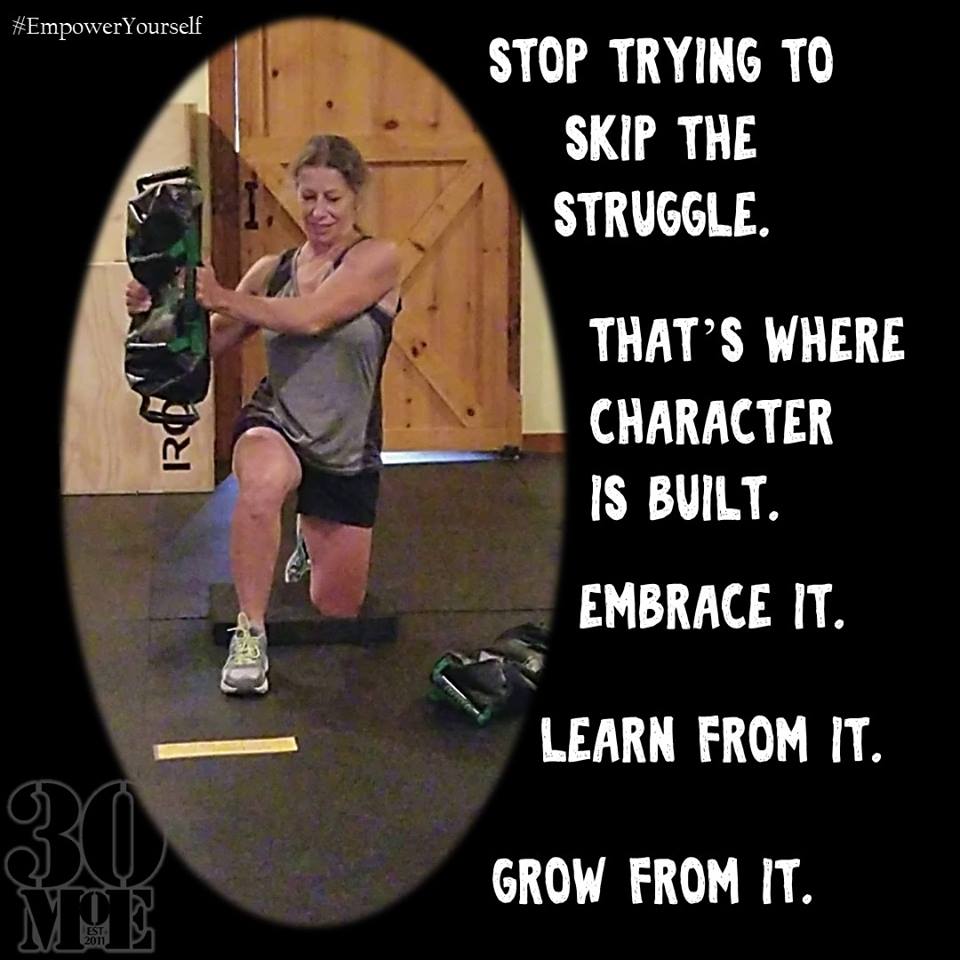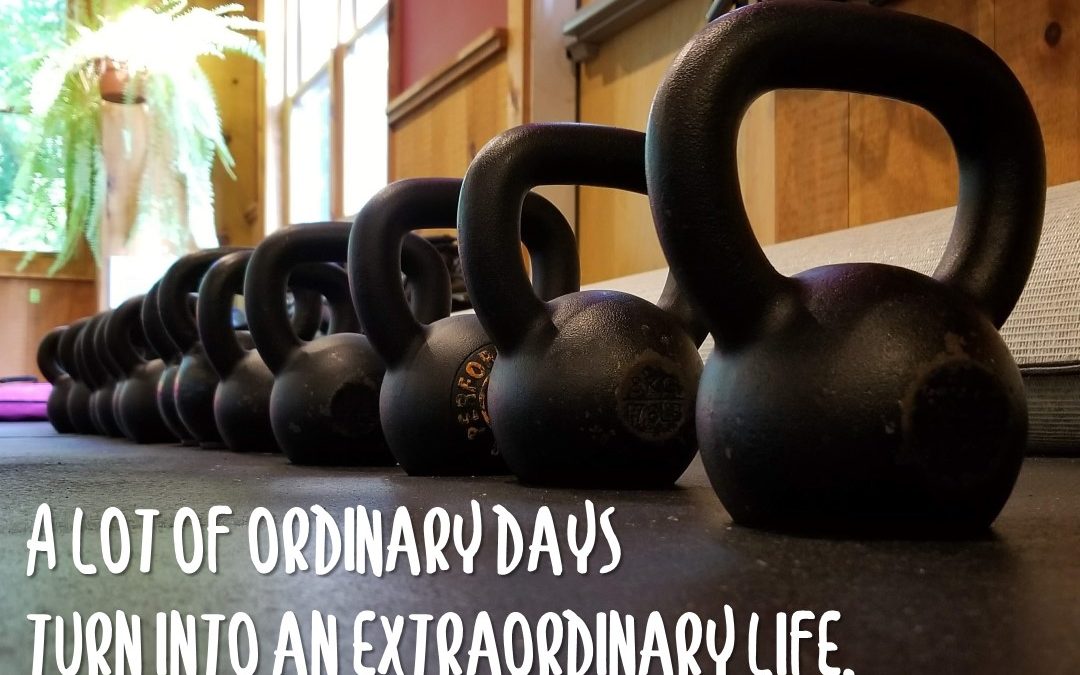Our bodies move in 3-D and have to be strong and mobile in all directions. We function safer, stronger, and more efficiently when we can control our bodies in all directions. Thus, we train in all directions, including rotation. When I worked in the Aging and Physical Performance Lab at the University of Georgia, we tested daily tasks in older adults. One of the tests was taking a full pot of water from the stove and putting it on the counter behind the client. Guess how they did that? They picked up the pot and rotated their body. When you grab something out of the refrigerator and put it on the counter, you rotate. To get into and out of your car, you rotate. Rotation is a task that we ask our bodies to do all the time, but we rarely are conscious of that movement pattern.
The connector between your upper and lower body is your core. This is the area that we are focusing on for rotational strength and power. In class, people will hear me talk about working “anti-rotation” movements (around the world, plank bag drag, etc), which makes your core strong. Your core includes your hips, glutes, back, lats, and abdominal muscles. Your entire middle needs to be integrated in upper and lower body movements. This is why we harp so much on “no wiggle” of your hips during any of these movements. If you can control your middle, your body will be able to do what you need it to for as long as you need it to. Enticing, isn’t it? I mean it! Performing rotational movements is usually when people get hurt – think of shoveling snow. Many clients told me this past winter that they braced their core when shoveling and it was so much easier and they didn’t get hurt. It works! We train anti-rotation and rotational strength in our group classes! I just shoveled dirt/rock for two hours on Sunday while bracing my core, pivoting my foot, and no back pain! It’s incredible how a strong core can save your body when you rotate – if you train it!
Anti-rotational training (mentioned above) gets your core strong as a precursor to rotational training where you actually rotate your whole body. You need that core strength before you can safely rotate your body. When we work rotation in class, I tell clients to “squish a bug under your foot”. Don’t be gentle. REALLY push the ball of your foot into the floor, squeeze your glutes, exhale, and brace your core! This rotational movement must start with your feet. I’ve seen some gentle little toe pivots and I’ve seen some really aggressive toe pivots. I want the aggressive toe pivot that rotates your whole body so your hips now face the other direction! Not sure what it looks like?

Think about how you cross your legs when you sneeze. If you don’t do that yet, watch any middle-aged woman sneeze! One foot will pivot as she rotates that knee inward in an effort to cross her legs while sneezing. OR watch a little kid who has to go to the bathroom. They do the same thing. Now that you have the visual of what I’m looking for, let’s do it!
Training rotation will decrease your risk for injury, increase your core strength, improve your balance, and make daily tasks easier! When we do rotational movements in class, think about aggressively squishing that bug under your foot, squeezing your glutes, exhaling, and bracing your core all at the same time. You will be stronger and life will be better!

